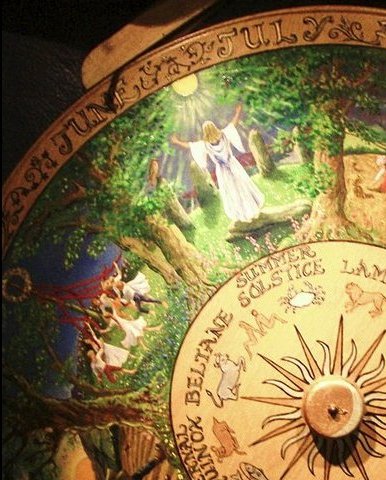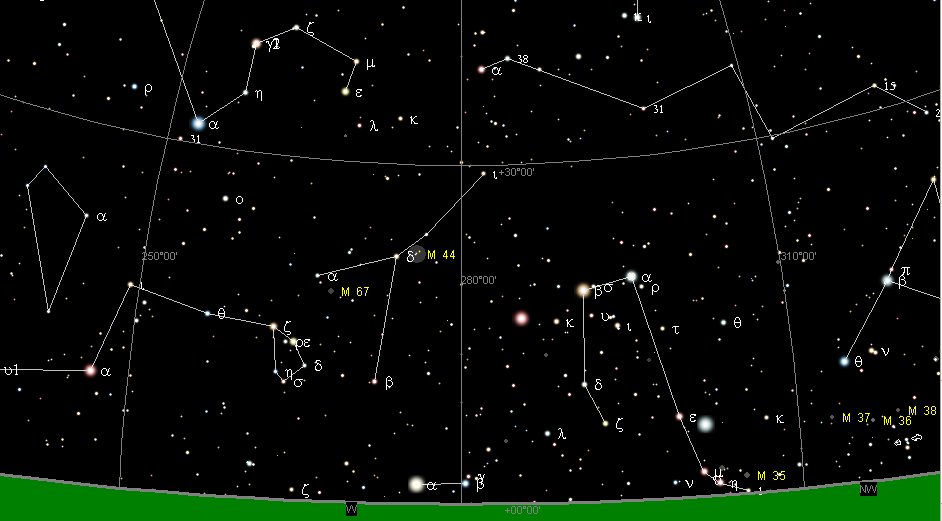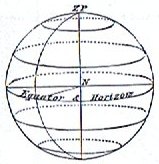10. Thus we ought to find all sorts of illuminations and distractions in the G text, even after the place where Mars speeded forward past Mekbuda (at the contracted knee of Pollus):
However, in the star map above I cannot find any useful star of reference close to Mars and therefore I cannot calculate what the date in July should be. I.e., I will not be able to localize the supposedly corresponding glyph in the G text. I decided to change the perspective from the default (standard) place for the observatory in the computer program to that of Easter Island. And indeed here, at May 14 AD 2023 03h EI we can find Mars between Castor and Pollux:
We have to get used to measuring timespace 'between' from the right ascension positions and not from the declinations (nor from a 2-dimensional star map). The view of the sky from the homeland of the Polynesians in the equatorial belt was different from that of the Europeans up in the north:
It does not matter if we change the observational time on Easter Island from 03h to something else, because Mars, Pollux, and Castor will always be practically oriented as if beads on a string.
From the fact that the right ascension difference between κ and β was no more than *116.2 (Pollux) - *116.1 (κ) = *0.1 (and because of the projected view of the night sky as observed from Easter Island in May 14 AD 2023), we can conclude that Mars could hardly be located in the next day, and we should therefore identify his place as that of Pollux:
|
||||||||||||||||||||||||||||||||||||||||||||||||||||||||||||||||||||||||||||||||||||||||||||||||||||||||||||||||||||||||||||||||||||||||||||||||||||||||||||||||||||||||||||||||||||||||||||||||||||||||||||||||||||||||||||||||||||||||||||||||||||||||||||||||

.jpg)















